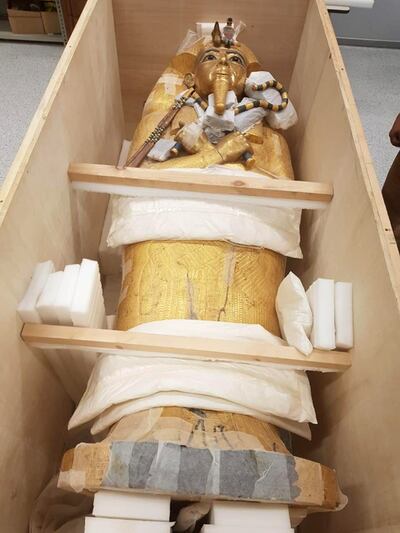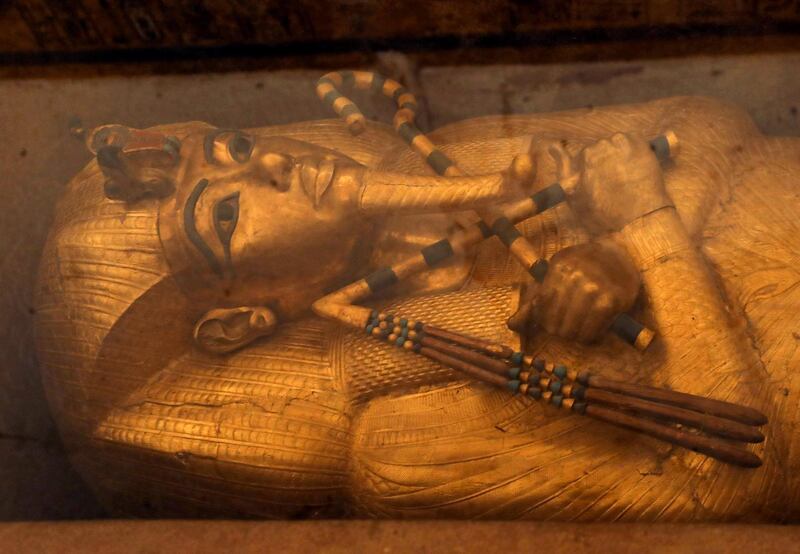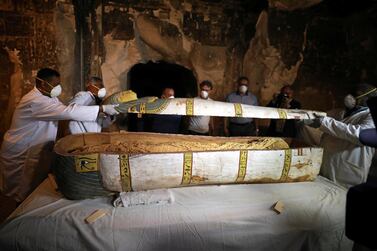Experts have begun restoration work on the golden-plated coffin of Egypt's boy-king Tutankhamun for the first time since the discovery of the tomb in 1922, the Egyptian Ministry of Antiquities said on Wednesday.
The coffin and the treasured collection of Tutankhamun's tomb are expected to be the centrepiece of the new Grand Egyptian Museum that Egypt will open next year near the Pyramids of Giza.
British archaeologist Howard Carter discovered the tomb of the 18th dynasty king in the Valley of the Kings in Luxor in 1922. The tomb was untouched and included about 5,000 artefacts.
The ministry said the coffin was transported from southern Egypt to the Grand Egyptian Museum three days ago "in order to be restored for the first time since the tomb's discovery".

"The coffin has suffered a lot of damage, including cracks in the golden layers of plaster and a general weakness in all golden layers," said Eissa Zidan, head of the First Aid Restoration Department at the Grand Egyptian Museum.
"The restoration work will take about eight months" he added.
Egypt has previously announced that the Grand Egyptian Museum, which has been under construction for about 15 years and is partially funded by Japan, will officially open by the end of 2020.
Egypt has made a string of amazing archeologically discoveries in the last two years as it embarks on a cultural push to lure back tourists put off by recent instability and terror attacks.
While the numerous announcements in the last 18 months pales in comparison to the scale of the digs in the early 20th century, they have been welcomed with fanfare and significant international media attention.
Antiquities Minister Khaled el Anani has been part of the media push at recent unvailings, inviting the press to watch as archaeologists open the finds for the first time.
This tactic is the government’s bid to revive the country’s vital tourism industry, which has been battered by years of upheaval following a 2011 uprising that toppled Hosni Mubarak’s 29-year rule.
It seems to have worked, at least partially.
The industry is showing signs of steady growth, with Egyptians in Cairo and elsewhere in the country now familiarising themselves again with the welcome sight of foreign tourists on the pristine Red Sea beaches, Cairo’s landmark Egyptian museum and the mediaeval bazaar, the Giza Pyramids as well as in Luxor, home to some of the world’s best-preserved ancient temples and tombs, including that of Tutankhamen.
Egypt has revealed over a dozen ancient discoveries since the beginning of last year.
These have included the discovery of dozens of cat mummies and a rare collection of mummified scarab beetles, all kept in coffins that date back about 6,000 years in the Saqqara area near the Giza Pyramids.
Last November, authorities unearthed two decorative sarcophagi, along with some 1,000 funerary statuettes and other objects like coloured wooden masks and papyrus on which parts of the ancient Egyptian “Book of the Dead” were inscribed.
Ancient Egyptians mummified humans to preserve their bodies for the afterlife, while animal mummies were used as religious offerings.







